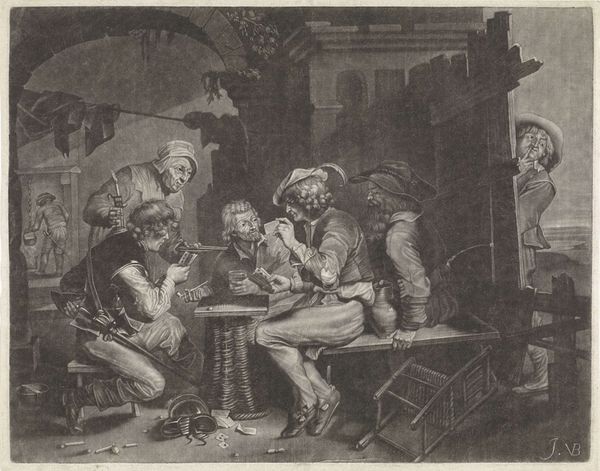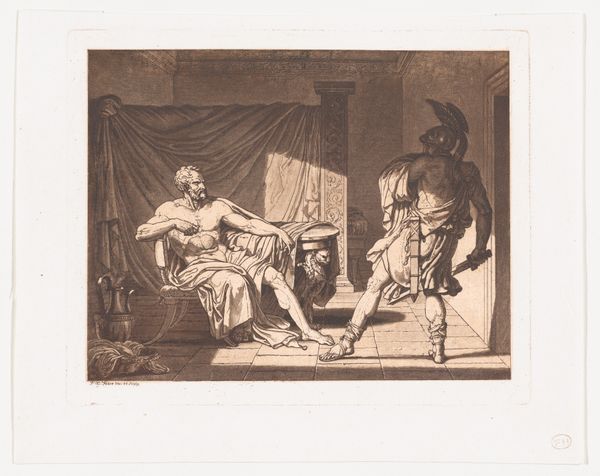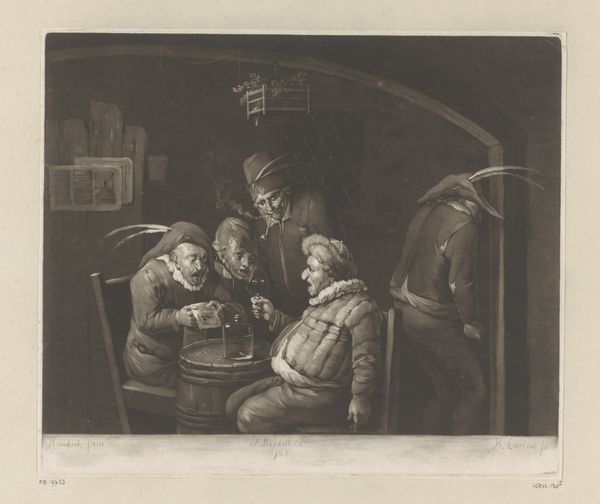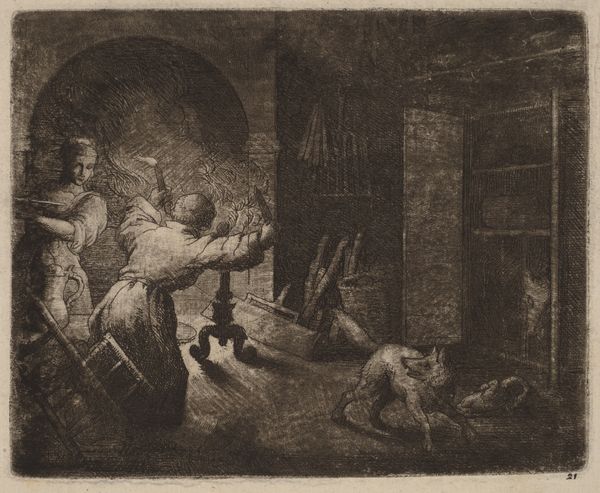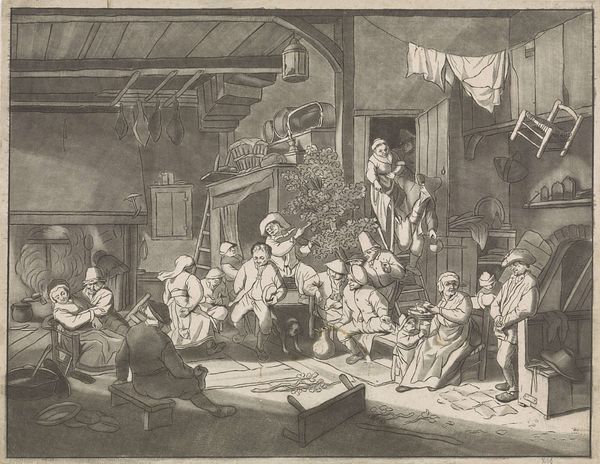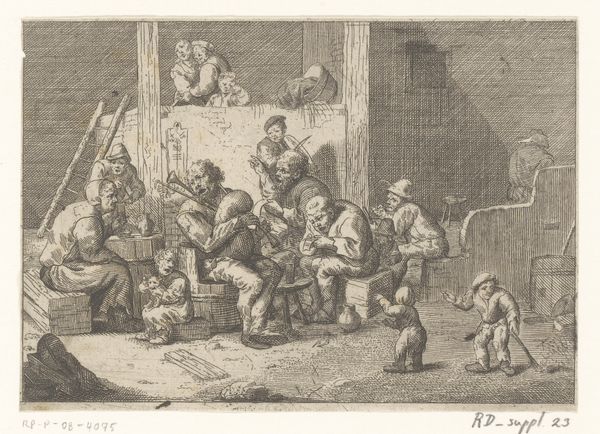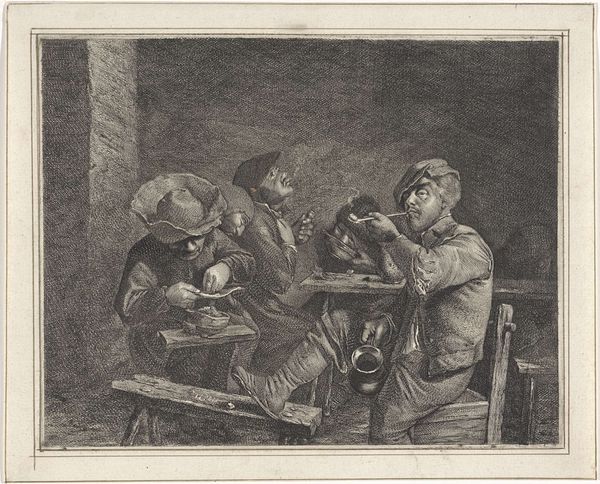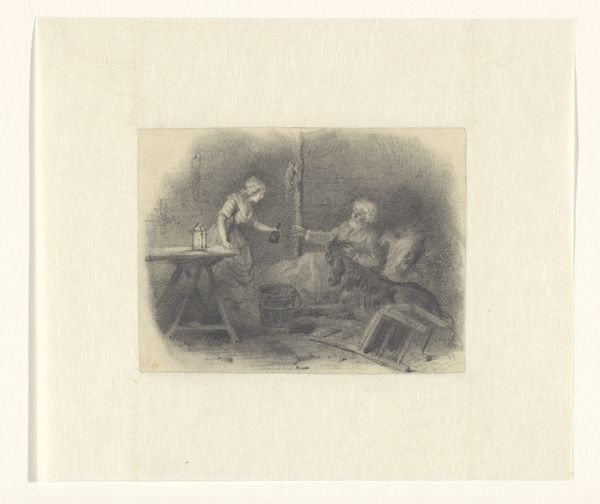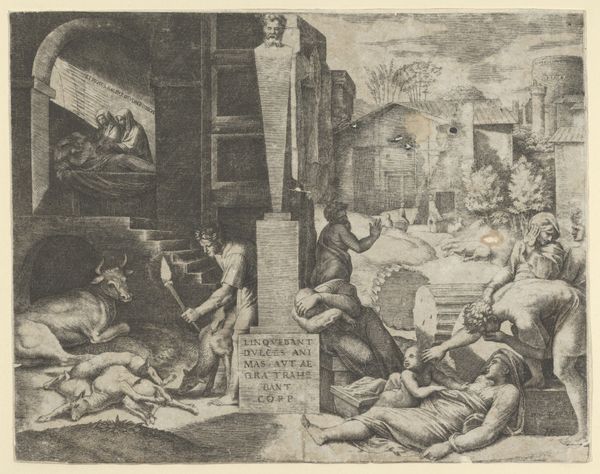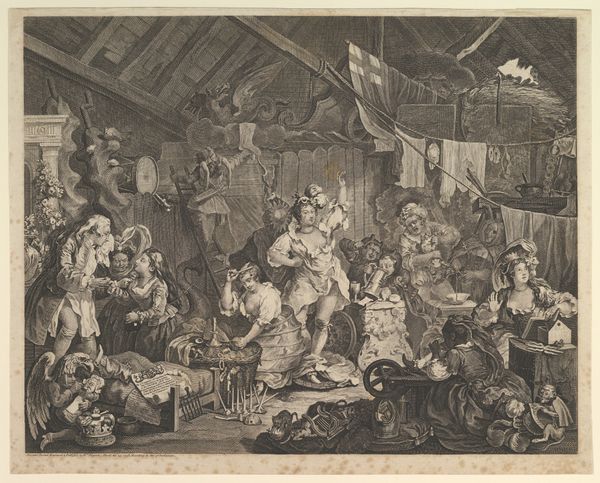
drawing, print, etching, paper
#
portrait
#
drawing
#
neoclacissism
#
allegory
# print
#
etching
#
figuration
#
paper
#
form
#
line
#
genre-painting
#
history-painting
#
realism
Dimensions: 174 × 185 mm (plate); 186 × 198 mm (sheet)
Copyright: Public Domain
Editor: So, this etching by Carl Russ, “Jupiter Visits with Philemon and Bacchus,” created in 1809, presents a classical scene. The contrast feels really stark and almost theatrical. I am curious about your reading of the work and its historical context. What draws your eye? Curator: The emphasis on line and form in this print is indeed striking. But beyond the classical allusion, I'm most interested in the labor involved in its making. Look closely—etching demanded considerable skill, time, and resources. Don’t you find the materiality of the print itself speaks to broader social conditions? Editor: You mean like the availability of materials like paper and acid and how that influenced who could create art like this? Curator: Precisely. Consider the social structures required to produce and disseminate these prints. How many people would have access to such luxury goods in 1809? The contrast between the mythical subject matter, representing idealized hospitality, and the material realities of its production is revealing. Who gets to represent whom and why? Editor: It does bring up questions of accessibility. The detailed rendering suggests a wealthy patron class consuming images of, well, simple generosity. Were these prints mainly for private collections? Curator: Likely so. Remember, this isn't just an aesthetic object. It's also a commodity, made and consumed within a specific economic and social system. Notice, also, the recurring jugs on the shelf. Think of the local production that would imply, the kilns, the clay, the workers...It suggests how seemingly simple objects carry intricate material narratives. Editor: I see what you mean. By looking at the etching process itself, and considering its circulation, we can uncover some hidden power dynamics. Thanks, that really opened my eyes to a whole other way of reading art! Curator: Indeed. By analyzing its material conditions, we start to unpack the cultural values embedded within the image and recognize the narratives they represent. There is more to an image than the picture it creates!
Comments
No comments
Be the first to comment and join the conversation on the ultimate creative platform.
